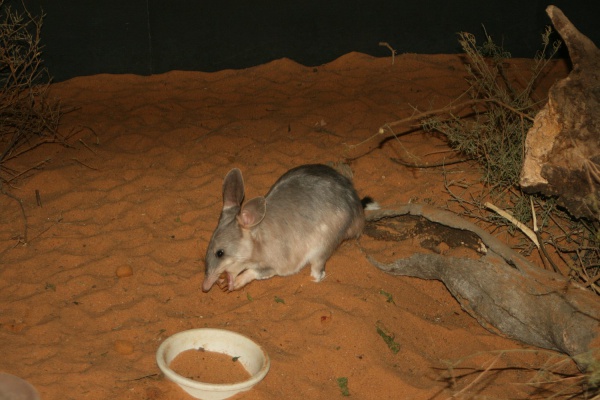Facts About Macrotis
Meet the bilbies, or rabbit-bandicoots, an intriguing genus of desert-dwelling marsupial omnivores. These endearing creatures belong to the order Peramelemorphia and are distinguished by their long ears and pointed noses, earning them the nickname "rabbit-eared bandicoots."
When Europeans first arrived in Australia, there were two species of bilbies. Regrettably, the lesser bilby went extinct in the 1950s, leaving only the greater bilby, which is now classified as vulnerable and endangered.
The name "Macrotis" is derived from Greek, meaning "big-eared" an apt descriptor for these animals. Their familial name, Thylacomyidae, has an interesting origin as well. It comes from an older, now obsolete name, Thylacomys, which translates to "pouched mouse." The term "bilby" itself is borrowed from the Yuwaalaraay Aboriginal language, where it means "long-nosed rat." There are also various other regional names for these creatures.
Bilbies are nocturnal and omnivorous, consuming a diverse diet that includes insects, seeds, fruits, and small animals. They do not require water as they obtain all necessary moisture from their food. These animals are exceptional diggers, constructing extensive burrow systems with their robust forelimbs and claws. Interestingly, female bilbies have pouches that face backward, preventing them from being filled with dirt while digging. They have a remarkably short gestation period of just 12-14 days.
Conservation efforts for bilbies focus on protecting their habitats, breeding them in captivity, monitoring their populations, and reintroducing them into the wild. They face significant threats from habitat loss, competition, and predators. Some reintroduction programs have been successful, and innovative initiatives like selling chocolate Easter Bilbies help raise awareness and funds for their protection.
Bilbies have an extensive evolutionary history, dating back about 15 million years. They evolved specialized traits to thrive in desert environments and diverged from their carnivorous bandicoot relatives around 20 million years ago. Fossil records have provided valuable insights into their evolution and adaptations over time.
